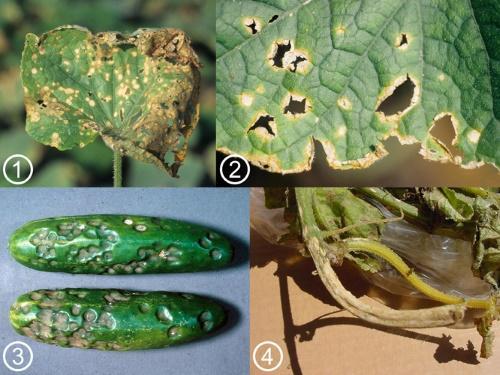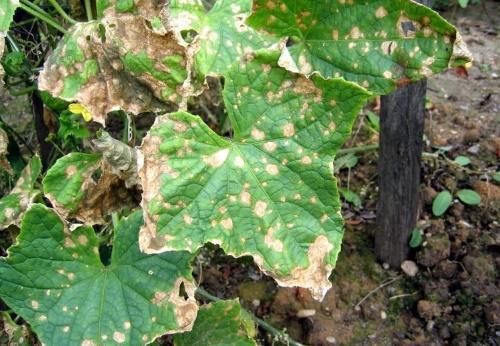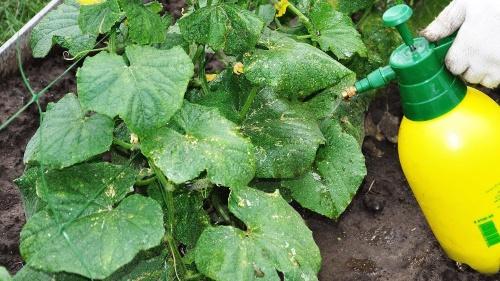Cucumber anthracnose - how to recognize and how to treat
 Have you noticed that in a rainy hot summer, the leaves and fruits of cucumbers are covered with strange spots right before your eyes? This is how the anthracnose of cucumbers, an insidious fungal disease, manifests itself. Why insidious? So at low humidity (less than 60%), nothing indicates that the plant is already affected. But when the temperature and humidity of the air rises, anthracnose spreads throughout the site in a matter of days. His defeat has such a wide area that there can be no question of any harvest. Cucumbers covered with ulcers are even scary to look at, let alone eat them. The disease should be fought immediately, and even better, prevention should be done in time.
Have you noticed that in a rainy hot summer, the leaves and fruits of cucumbers are covered with strange spots right before your eyes? This is how the anthracnose of cucumbers, an insidious fungal disease, manifests itself. Why insidious? So at low humidity (less than 60%), nothing indicates that the plant is already affected. But when the temperature and humidity of the air rises, anthracnose spreads throughout the site in a matter of days. His defeat has such a wide area that there can be no question of any harvest. Cucumbers covered with ulcers are even scary to look at, let alone eat them. The disease should be fought immediately, and even better, prevention should be done in time.
Symptoms of the manifestation of anthracnose on cucumbers

- Leaves, mainly the lower ones, are affected first. Wet spots appear along the edges and between the veins. They quickly turn yellow, begin to increase in size and dry out. The wind often tears the foliage apart.
- Then the infection spreads to the shoots: they are covered with brownish oval sores. If it rains, the sores rot, forming a pink mold. In dry weather, they dry out too.
- The penultimate ovary suffers. Weeping spots also appear on the fruits, turning into depressed ulcers. Cucumbers lose their presentation, begin to shrink and rot. Even if you cut out such an area, the fruit itself is impossible to eat because of the bitterness that has appeared.
- The "final chord" the disease inflicts on the roots, leading to the complete extinction of the plant.
Most often, anthracnose "walks" in greenhouses, especially film ones, where there is high humidity. There it can be found already at the beginning of spring. In open ground, it appears closer to the middle of summer.
Cucumber anthracnose - measures to combat fungal disease
 When the first signs appear, take urgent action, otherwise the fungus will multiply quickly. A good effect will be given by treating the bushes with Bordeaux mixture. Fungicides will also help get rid of the disease: Fitosporin, Topaz, Abiga - Peak. However, please note that chemicals cannot be used less than 10 days before harvest.
When the first signs appear, take urgent action, otherwise the fungus will multiply quickly. A good effect will be given by treating the bushes with Bordeaux mixture. Fungicides will also help get rid of the disease: Fitosporin, Topaz, Abiga - Peak. However, please note that chemicals cannot be used less than 10 days before harvest.
To prevent the risk of anthracnose damage, give preference to varieties that are resistant to this fungus. For example, the hybrids Vector, Cupid, Rita, Swallow.
To prevent anthracnose in the fall, be sure to burn plant residues - mycelium overwinters on them. Remember to dress the seeds with fungicides before sowing. Do not grow cucumbers in one place yet - return them to the garden no earlier than after 3 years.